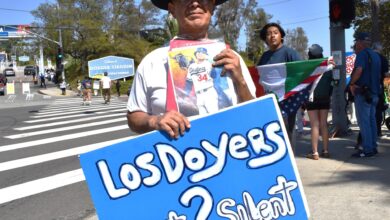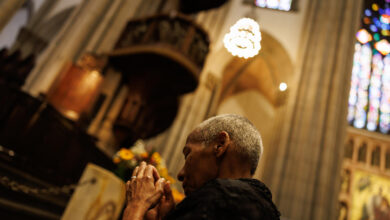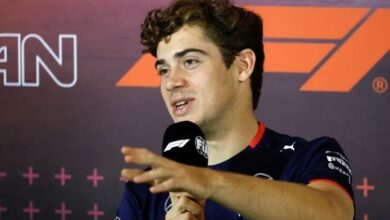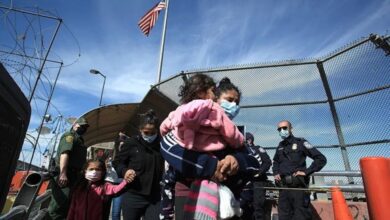Latin American Foto Festival Showcases Vibrant Cultures Through Lens
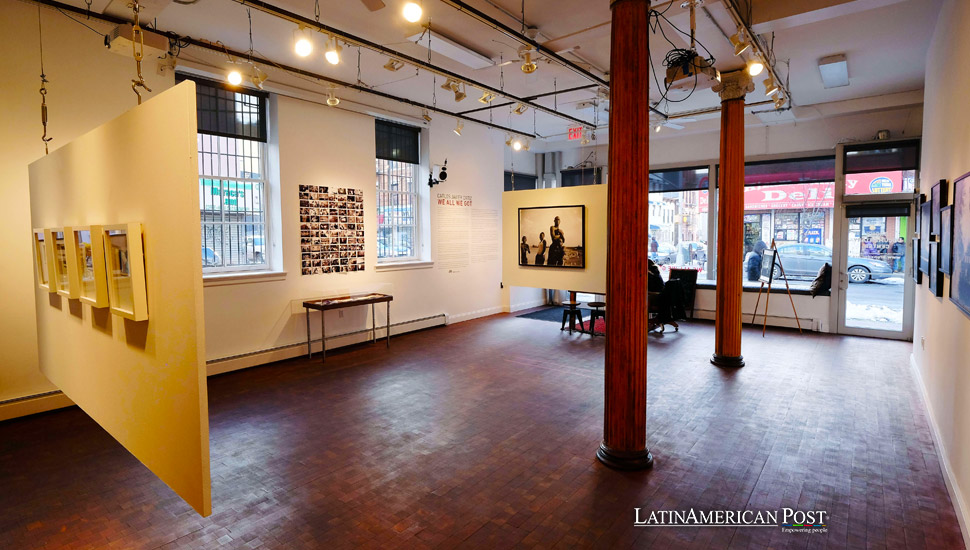
The Bronx Documentary Center’s Latin American Foto Festival offers a vibrant showcase of diverse cultures and communities, featuring stunning photography across Latin America.
In late July, the oppressive heat of New York City’s summer was momentarily lifted by the serene and captivating images displayed along Melrose Avenue in the South Bronx. Bolivian photographer Wara Vargas’s documentary project, “Sueña” (2017), featured elaborately dressed women peacefully floating in a swimming pool, offering an aquatic escape. This was part of the Bronx Documentary Center’s (BDC) seventh annual Latin American Foto Festival (LAFF).
Vargas’s work centers on Bolivia’s Indigenous Aymara and Quechua communities, particularly a group of women who proudly identify as cholas. This term, once a racist slur, has been reclaimed by Indigenous communities. In her underwater series, Vargas highlights their distinctive everyday attire, including embroidered polleras (skirts), colorful enaguas (underskirts), elegant jewelry, and long, plaited hair adorned with bowler hats. “I want the Bolivian community to feel part of the cultural movement of [New York City] and for the most humble migrant workers who see the photos to feel proud of their roots,” Vargas told Hyperallergic.
Celebrating Cultural Heritage
Vargas’s photographic tribute to cholita heritage is one of ten projects featured at LAFF this year. Curated by Cynthia Rivera and Michael Kamber, the festival showcases the work of photographers and organizations from Brazil, Cuba, Guatemala, Mexico, Peru, Bolivia, and other countries. Initially displayed for two weeks in July, the exhibition featured large-scale photographs on public fences, building exteriors, and community garden perimeters across four boroughs. The festival continues in Lower Manhattan and Hunts Point throughout August.
This year’s highlights at LAFF include Alejandro Cegarra’s “The Two Walls” (2019–2023), a grayscale series that vividly depicts the impact of the U.S. government’s anti-migrant policies on asylum seekers in Mexico. Magda Gibelli’s “Ballet Without Barriers” (2023) documents a Peruvian ballet school offering accessible classes to all students, while Santiago Billy’s “El Palo Volador – Reaching Heaven” (2016–ongoing) captures a centuries-old ritual dance in a Guatemalan village. Each of these projects offers a unique perspective, enriching the festival’s diverse narrative.
Jorge Santiago’s project “Identity At Play” (2009–2024) focuses on basketball culture in Oaxaca’s Indigenous communities in the Sierra Norte region. Santiago expressed the significance of displaying his work in the Bronx, which can reach a broader audience. “I’m hoping spectators will see themselves reflected in the images and will remember that even from afar, they are still an important part of their communities,” Santiago told Hyperallergic.
Expanding Reach and Impact
This year, LAFF expanded its reach beyond the Bronx, paying homage to longstanding cultural spaces and community anchors in New York City’s predominantly Latin American neighborhoods. In Brooklyn, the festival commemorated the Caribbean Social Club, showcasing archival photography chronicling five decades of the neighborhood staple in a series affectionately named after its founder, Maria Antonia Cay, known as “Toñita.” Programming also occurred in Queens’s Jackson Heights neighborhood and Manhattan’s Loisaida, a historically significant area for many Latine residents. This expansion not only broadens the festival’s reach but also enriches its cultural narrative.
Brazilian photographer Lalo de Almeida’s work also featured prominently at the festival. His images, usually published in a regional newspaper, focus on the environmental destruction of Brazil’s Amazon rainforest and Pantanal floodplain and its impact on local communities. Almeida noted that LAFF provides a valuable opportunity to bring his work to a broader audience, emphasizing the importance of reaching people beyond his usual readership.
Engaging the Community
Another primary goal of this year’s festival was to showcase collectives and organizations that teach youth storytelling, a mission central to the BDC’s heart. This year’s exhibition includes a glimpse into Fotokids’s sweeping retrospective of thousands of photographs taken by Guatemalan children over the last three decades. Highlighting these collectives is essential to ensuring that youth storytelling remains a vibrant and integral part of our cultural narrative, and it underscores the festival’s commitment to nurturing the next generation of storytellers.
In addition to the photographic exhibitions, LAFF organizers added events spanning poetry, music, and food to create a well-rounded cultural experience. These programs aim to enrich the festival and provide attendees with a deeper connection to the stories and cultures represented in the photographs. Rivera mentioned that these additions were crucial in creating a comprehensive cultural experience beyond visual art.
The festival will continue from August 10 until August 31 as a dual indoor-outdoor exhibition at the nonprofit gallery BronxArtsSpace in Hunts Point. Meanwhile, exhibitions featuring the work of Lisandra Alvarez and Manuel Almenares will be on display for the entirety of the month at the art space La Sala de Pepe in Manhattan.
The Power of Photography
LAFF’s diverse range of projects and expansive reach highlight the power of photography to capture and communicate complex cultural narratives. The festival showcases the beauty and resilience of Latin American communities and serves as a platform for photographers to share their unique perspectives with a broader audience. Through their lenses, these artists document the struggles, triumphs, and everyday lives of people across Latin America, fostering greater understanding and appreciation for these cultures.
By including youth storytelling initiatives and community-focused events, the festival underscores its commitment to nurturing the next generation of storytellers and ensuring their voices are heard. By providing young people with the tools and platforms to share their stories, LAFF helps preserve cultural heritage and encourages a sense of pride and belonging among participants, inspiring hope for the future of cultural storytelling.
Also read: The Rise of Latin Music Short Films in 2024
The Latin American Foto Festival at the Bronx Documentary Center is a celebration of cultural diversity and artistic expression. Through the compelling works of photographers from across Latin America, the festival offers a window into these communities’ rich and varied experiences. As it continues to grow and expand its reach, LAFF remains a vital cultural event, fostering connections and understanding through the universal language of photography, and creating a sense of empathy and connection among its diverse audience.

